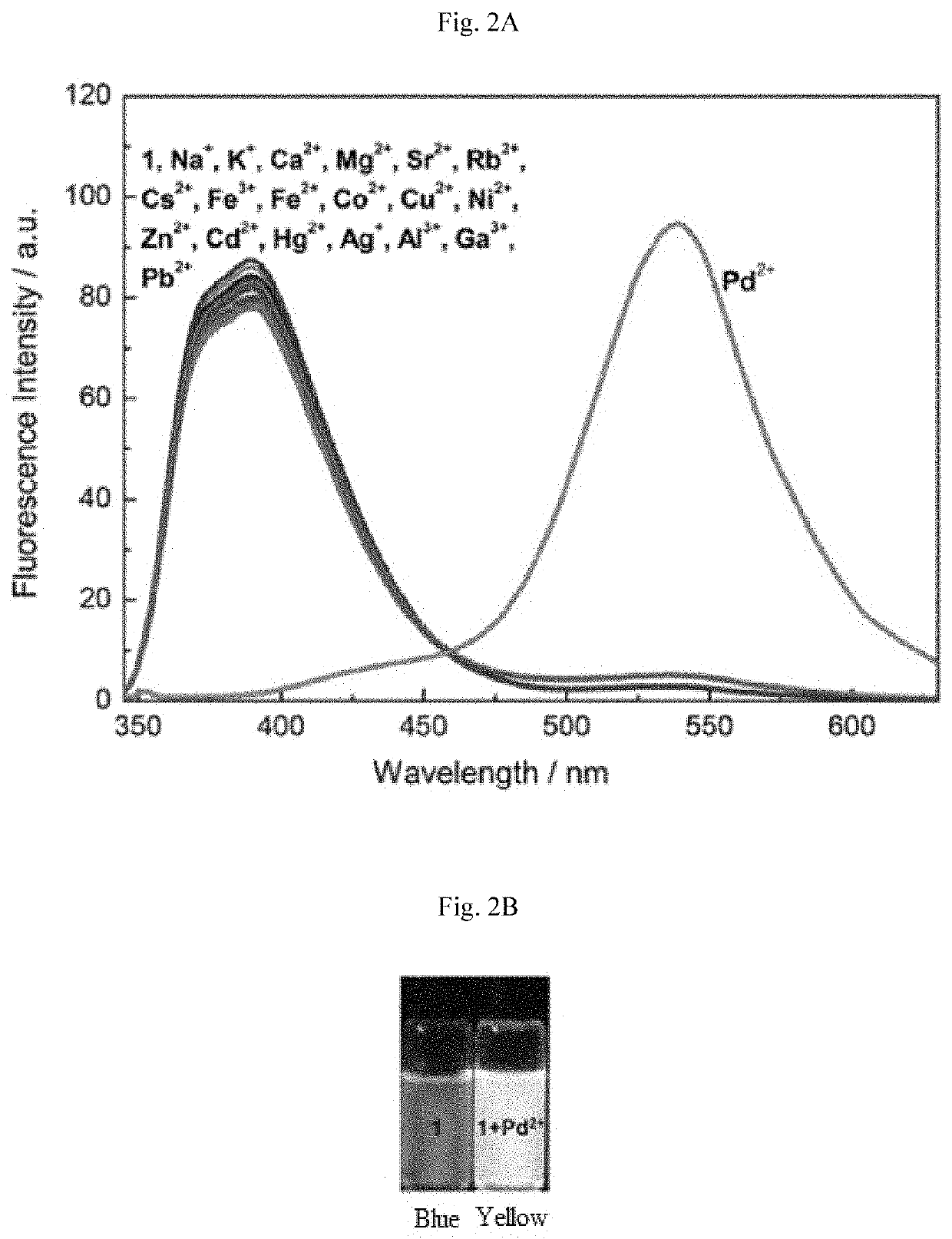Chemosensor and a method of detecting palladium ions
a chemosensor and palladium ion technology, applied in the field of palladium selective chemosensors, can solve the problems of increasing the emission of palladium into the environment, serious health hazards, and all these methods require expensive facilities, and achieves easy identification of on-off optical readouts, high sensitiveness, and easy to make.
- Summary
- Abstract
- Description
- Claims
- Application Information
AI Technical Summary
Benefits of technology
Problems solved by technology
Method used
Image
Examples
examples
General Methods
[0146]Melting points were determined using a Thomas-Hoover capillary melting point apparatus and are uncorrected. 1H and 13C NMR spectra were recorded on a JEOL 400 MHz spectrometer using Me4Si as the internal standard. UV-vis absorption spectra were obtained using a Jasco V-670 spectrophotometer. Fluorescence spectra were measured using a Horiba, Fluorolog-3 fluorescence spectrophotometer, equipped with a xenon discharge lamp and 1 cm quartz cells with slit width 5 nm. All of the measurements were carried out at 298 K.
[0147]Deionized water (double distilled) was used throughout the experiment as the aqueous media. All other materials used for synthesis and solvents were purchased from Aldrich Chemical Co. and used without further purification. Compound 4 was synthesized in accordance with the literature procedure. See Sivaraman G, Chellappa D (2013) J Mater Chem B 1: 5768-5772, incorporated herein by reference in its entirety. The solutions of metal ions were prepare...
PUM
| Property | Measurement | Unit |
|---|---|---|
| pH | aaaaa | aaaaa |
| pH | aaaaa | aaaaa |
| temperature | aaaaa | aaaaa |
Abstract
Description
Claims
Application Information
 Login to View More
Login to View More - R&D
- Intellectual Property
- Life Sciences
- Materials
- Tech Scout
- Unparalleled Data Quality
- Higher Quality Content
- 60% Fewer Hallucinations
Browse by: Latest US Patents, China's latest patents, Technical Efficacy Thesaurus, Application Domain, Technology Topic, Popular Technical Reports.
© 2025 PatSnap. All rights reserved.Legal|Privacy policy|Modern Slavery Act Transparency Statement|Sitemap|About US| Contact US: help@patsnap.com



